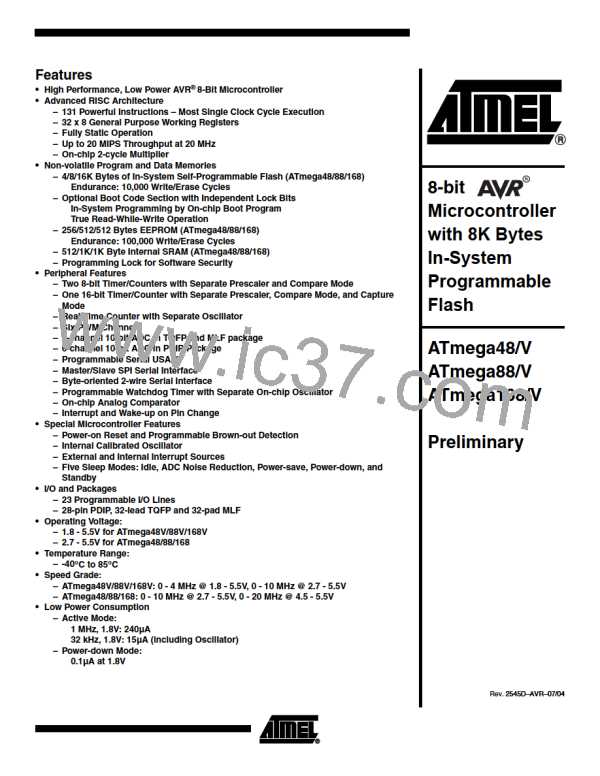A Flash program corruption can be caused by two situations when the voltage is too low.
First, a regular write sequence to the Flash requires a minimum voltage to operate cor-
rectly. Secondly, the CPU itself can execute instructions incorrectly, if the supply voltage
for executing instructions is too low.
Flash corruption can easily be avoided by following these design recommendations (one
is sufficient):
1. Keep the AVR RESET active (low) during periods of insufficient power supply
voltage. This can be done by enabling the internal Brown-out Detector (BOD) if
the operating voltage matches the detection level. If not, an external low VCC
reset protection circuit can be used. If a reset occurs while a write operation is in
progress, the write operation will be completed provided that the power supply
voltage is sufficient.
2. Keep the AVR core in Power-down sleep mode during periods of low VCC. This
will prevent the CPU from attempting to decode and execute instructions, effec-
tively protecting the SPMCSR Register and thus the Flash from unintentional
writes.
Programming Time for Flash
when Using SPM
The calibrated RC Oscillator is used to time Flash accesses. Table 108 shows the typi-
cal programming time for Flash accesses from the CPU.
Table 103. SPM Programming Time
Symbol
Min Programming Time Max Programming Time
3.7 ms 4.5 ms
Flash write (Page Erase, Page Write,
and write Lock bits by SPM)
252
ATmega48/88/168
2545D–AVR–07/04

 ATMEL [ ATMEL ]
ATMEL [ ATMEL ]